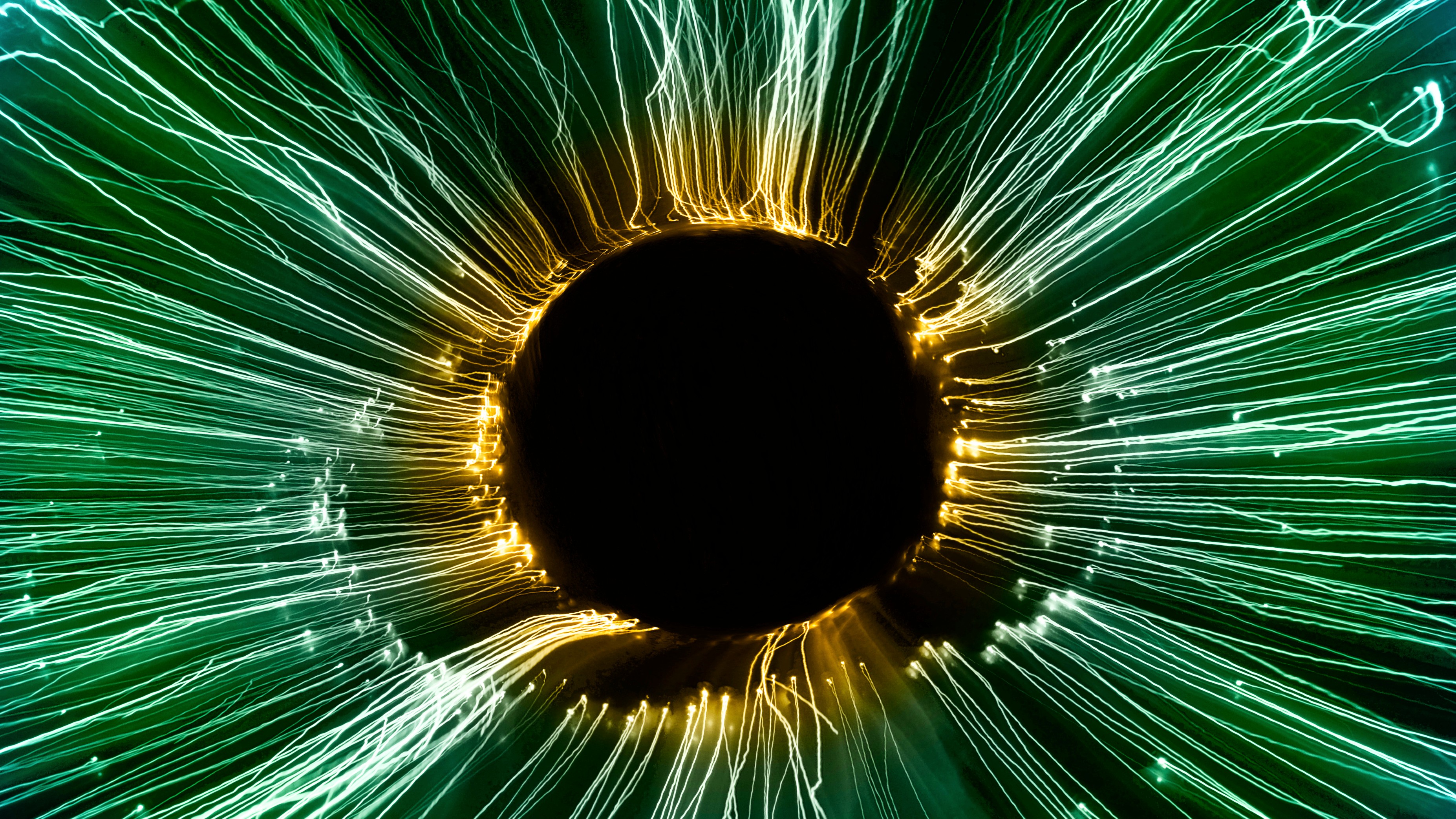Throwback Thursday: The Most Energetic Particles
These cosmic monsters make the LHC look like child’s play, and yet even they have their limits.
“Energy is liberated matter, matter is energy waiting to happen.” –Bill Bryson
You might think of the largest and most powerful particle accelerators in the world — places like SLAC, Fermilab and the Large Hadron Collider — as the source of the highest energies we’ll ever see. But everything we’ve ever done here on Earth has absolutely nothing on the natural Universe itself!
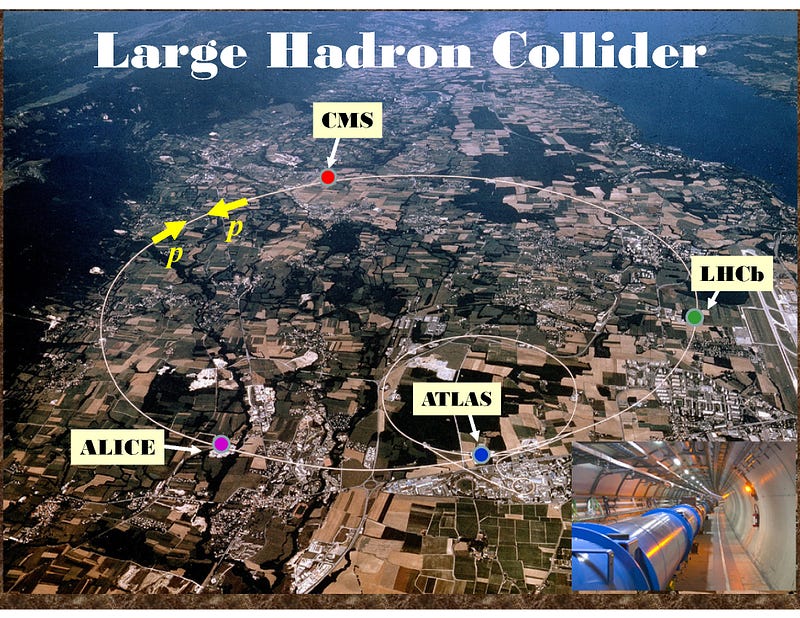
In fact, if you were interested in the most energetic particles on Earth, looking at the Large Hadron Collider — at the 13 TeV collisions occurring inside — you wouldn’t even be close to the highest energies. Sure, those are the highest human-made energies for particles, but we’re constantly bombarded all the time by particles far, far greater in energy.
If you’ve never heard of them before, let me introduce you to a term I hope you’ll never forget after learning about them now: cosmic rays, famous the world over for their (fictional) effects, turning the four scientists aboard Reed Richards’ spacecraft into the Fantastic Four.
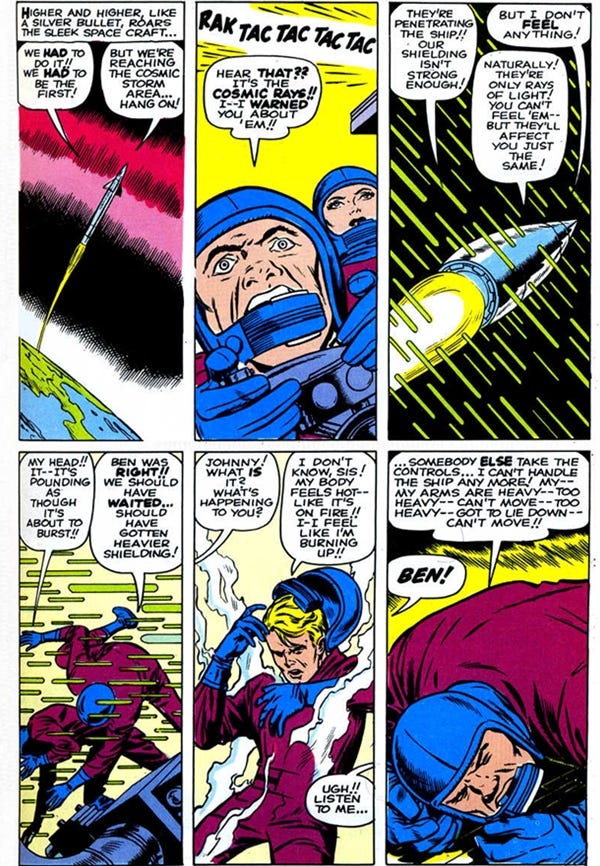
You didn’t need to be in space, or even to have any type of flight, to know that these particles existed. Even before the first human beings ever left the surface of the Earth, it was widely known that up there, above the protection of the Earth’s atmosphere, outer space was filled with high-energy radiation. How did we know?
The first clues came from looking at one of the simplest electricity experiments you can do on Earth, involving an electroscope. If you’ve never heard of an electroscope, it’s a simple device: take two thin pieces of conducting, metal foil, place them in an airless vacuum, and connect them to a conductor on the outside that you can control the electric charge of.
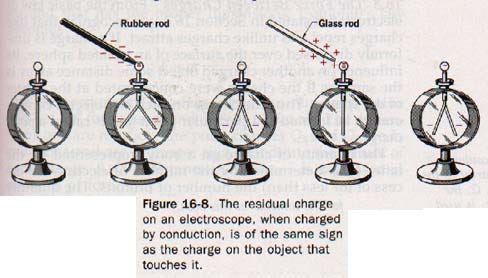
If you place an electric charge on one of these devices — where two conducting metal leaves are connected to another conductor — both leaves will gain the same electric charge, and repel one another as a result. You’d expect, over time, for the charge to dissipate into the surrounding air, which it does. So you might have the bright idea to isolate it as completely as possible, perhaps creating a vacuum around the electroscope once you charge it up.
But even if you do, the electroscope still slowly discharges! In fact, even if you placed lead shielding around the vacuum, it would still discharge, and experiments in the early 20th century gave us a clue as to why: if you went to higher and higher altitudes, the discharge happened more quickly. A few scientists put forth the hypothesis that the discharge was happening because high-energy radiation — radiation with both extremely large penetrating power and an extraterrestrial origin — was responsible for this.

Well, you know the deal when it comes to science: if you want to confirm or refute your new idea, you test it! So in 1912, Victor Hess conducted balloon-borne experiments to search for these high-energy cosmic particles, discovering them immediately in great abundance and henceforth becoming the father of cosmic rays.
The early detectors were remarkable in their simplicity: you set up some sort of emulsion (or later, a cloud chamber) that’s sensitive to charged particles passing through it and place a magnetic field around it. When a charged particle comes in, you can learn two extremely important things:
- The particle’s charge-to-mass ratio and
- its velocity,
simply dependent on how the particle’s track curves, something that’s a dead giveaway so long as you know the strength of the magnetic field you applied.
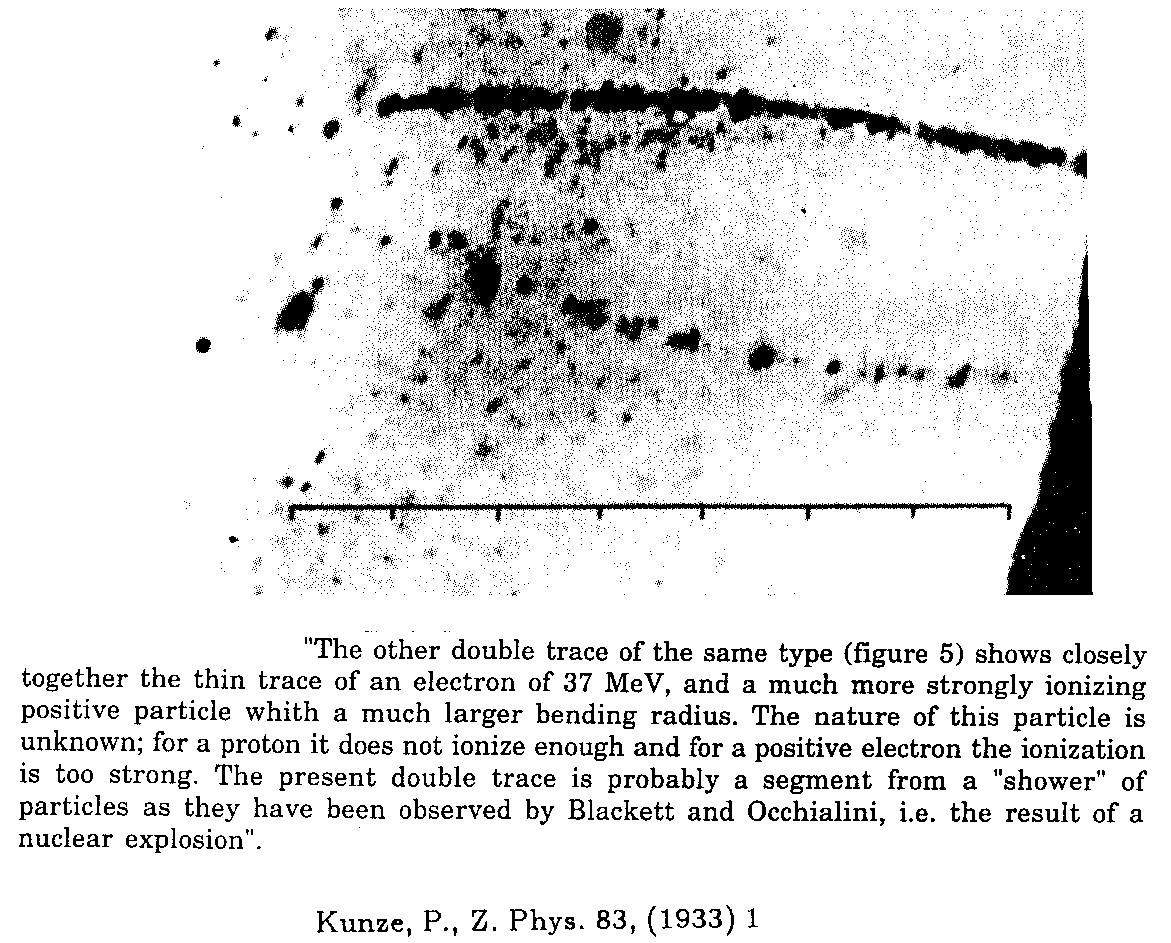
In the 1930s, a number of experiments — both in early terrestrial particle accelerators and via more sophisticated cosmic ray detectors — turned up some interesting information. For starters, the vast majority of cosmic ray particles (around 90%) were protons, which came in a wide range of energies, from a few mega-electron-Volts (MeV) all the way up to as high as they could be measured by any known equipment! The vast majority of the rest of them were alpha-particles, or helium nuclei with two protons and two neutrons, with comparable energies to the protons.
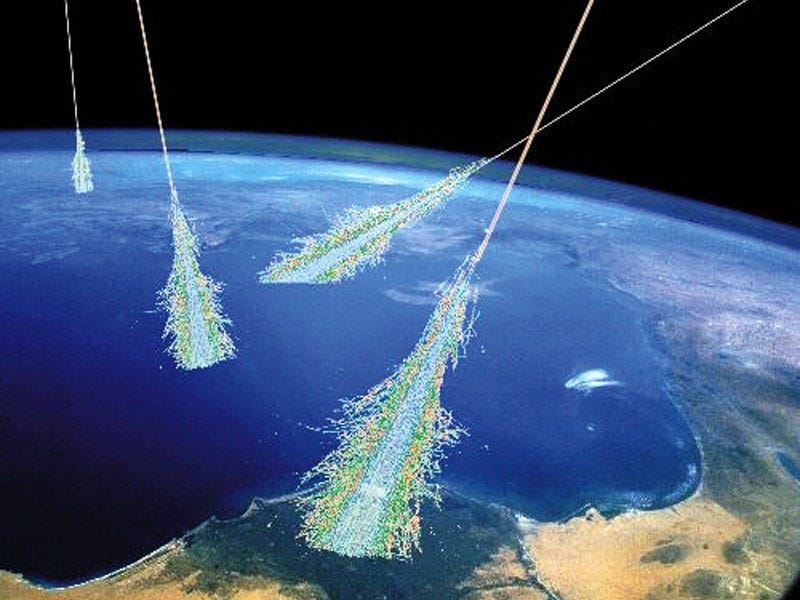
When these cosmic rays hit the top of the Earth’s atmosphere, they interacted with it, producing cascading reactions where the products of each new interaction led to subsequent interactions with new atmospheric particles. The end result was the creation of what’s called a shower of high-energy particles, including two new ones: the positron — hypothesized in 1930 by Dirac, the antimatter counterpart of the electron with the same mass but a positive charge — and the muon, an unstable particle with the same charge as the electron but some 206 times heavier! The positron was discovered by Carl Anderson in 1932 and the muon by him and his student Seth Neddermeyer in 1936, but the first muon event was discovered by Paul Kunze a few years earlier, which history seems to have forgotten!
One of the most amazing things is that even here on the surface of the Earth, if you hold out your hand so that it’s parallel to the ground, about one muon passes through it every second.
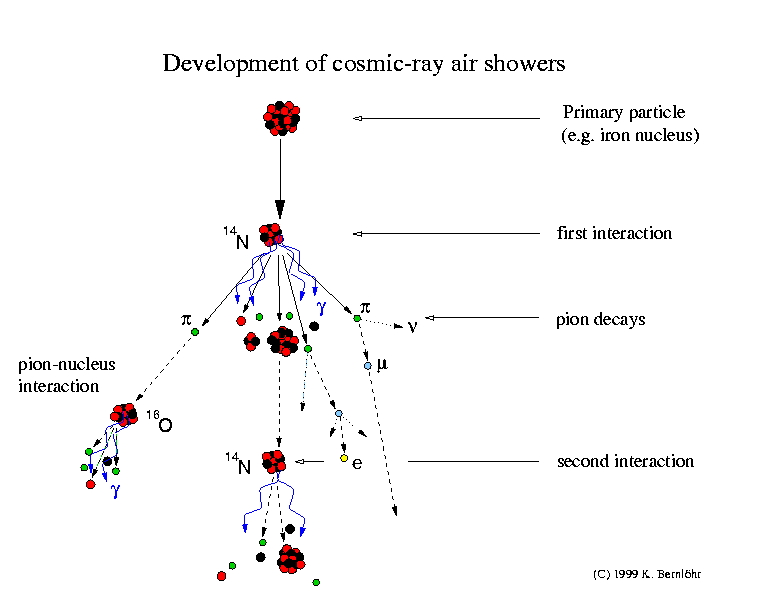
Every muon that passes through your hand originates from a cosmic ray shower, and every single one that does so is a vindication of the theory of special relativity! You see, these muons are created at a typical altitude of about 100 km, but a muon’s mean lifetime is only about 2.2 microseconds! Even moving at the speed of light (299,792.458 km/sec), a muon would only travel about 660 meters before it decays. Yet because of time dilation — or the fact that particles moving close to the speed of light experience time passing at a slower rate from the point-of-view of a stationary outside observer — these fast-moving muons can travel all the way to the surface of the Earth before they decay, and that’s where muons on Earth originate!
Fast-forward to the present day, and it turns out that we’ve accurately measured both the abundance and energy spectrum of these cosmic particles!
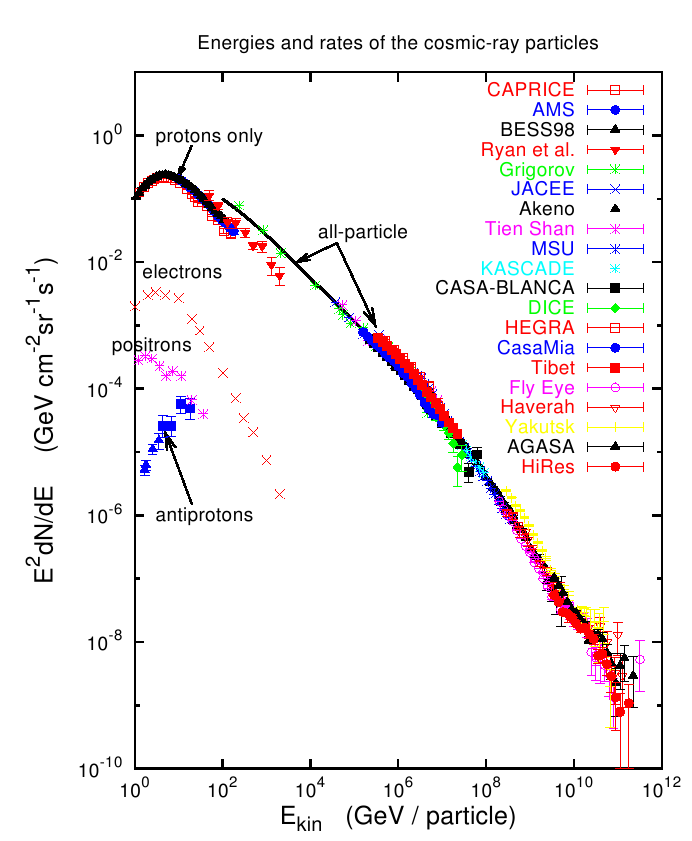
Particles with about 100 GeV worth of energy and under are by far the most common, with about one 100 GeV particle (that’s 10^11 eV) hitting every square-meter cross-section of our local region of space every second. Although higher-energy particles are still there, they’re far less frequent as we look to higher and higher energies.
For example, by time you reach 10,000,000 GeV (or 10^16 eV), you’re only getting one-per-square-meter each year, and for the highest energy ones, the ones at 5 × 10^10 GeV (or 5 × 10^19 eV), you’d need to build a square detector that measured about 10 kilometers on a side just to detect one particle of that energy per year!
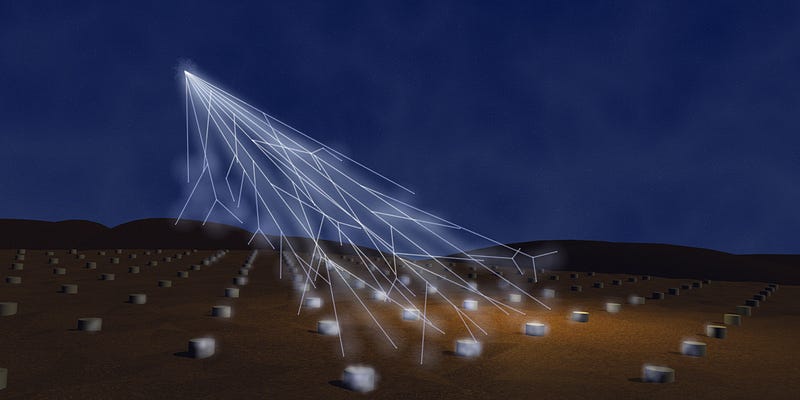
Seems like a crazy idea, doesn’t it? It’s asking for a huge investment of resources to detect these incredibly rare particles. And yet there’s an extraordinarily compelling reason that we’d want to do so: there should be a cutoff in the energies of cosmic rays, and a speed limit for protons in the Universe! You see, there might not be a limit to the energies we can give to protons in the Universe: you can accelerate charged particles using magnetic fields, and the largest, most active black holes in the Universe could give rise to protons with energies even greater than the ones we’ve observed!
But they have to travel through the Universe to reach us, and the Universe — even in the emptiness of deep space — isn’t completely empty. Instead, it’s filled with large amounts of cold, low-energy radiation: the cosmic microwave background!
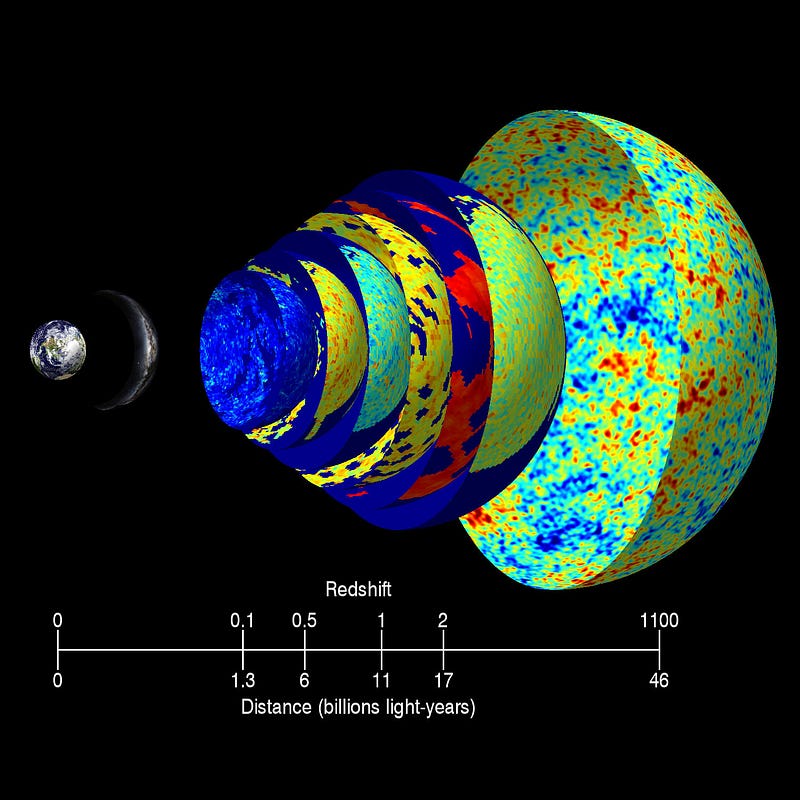
The only places where the highest energy particles are created are around the most massive, active black holes in the Universe, all of which are far beyond our own galaxy. And if particles with energies in excess of 5 × 10^10 GeV are created, they can only travel a few million light years — max — before one of these photons, left over from the Big Bang, interacts with it and causes it to produce a pion, radiating away the excess energy and falling down to this theoretical cosmic energy limit, known as the GZK cutoff. (More details here.)
So we did the only reasonable thing for physicists to do: we built a detector that ridiculously large and looked, and saw if this cutoff existed!
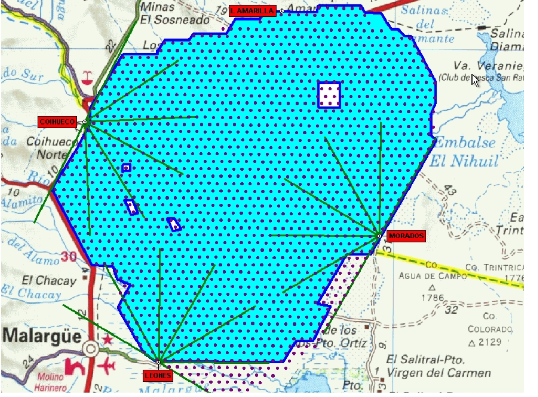
The Pierre Auger Observatory has done exactly this, verifying that cosmic rays exist up to but not over this incredibly high-energy threshold, a literal factor of about 10,000,000 larger than the energies reached at the LHC! This means the fastest protons we’ve ever seen evidence for in the Universe are moving almost at the speed-of-light, which is exactly 299,792,458 m/s, but just a tiny bit slower. How much slower?
The fastest protons — the ones just at the GZK cutoff — move at 299,792,457.999999999999918 meters-per-second, or if you raced a photon and one of these protons to the Andromeda galaxy and back, the photon would arrive a measly six seconds sooner than the proton would… after a journey of more than five million years! But these ultra-high-energy cosmic rays don’t come from Andromeda; they come from active galaxies with supermassive black holes like NGC 1275, which tend to be hundreds of millions or even billions of light years away.
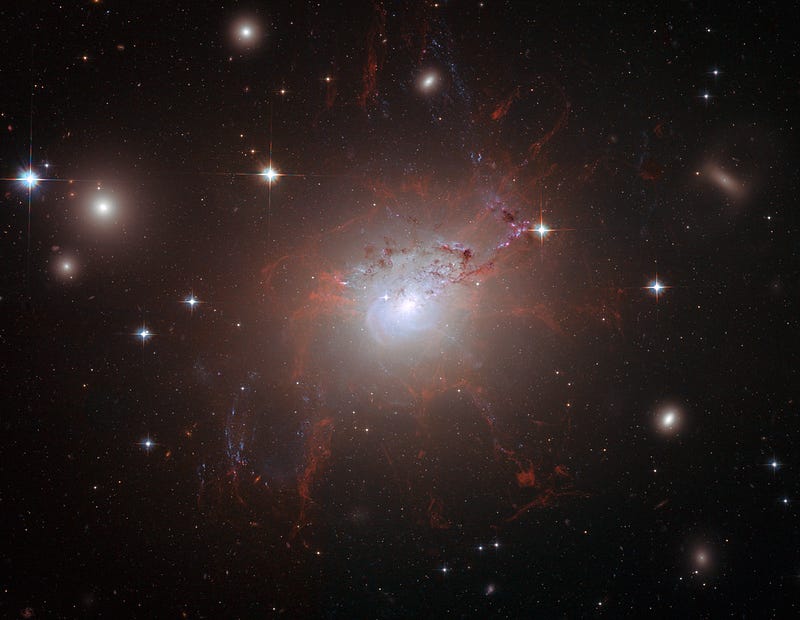
We even know — thanks to NASA’s Interstellar Boundary Explorer (IBEX) — that there are about 10 times as many cosmic rays out there in deep space as we detect here on-and-around Earth, as the Sun’s heliosheath protects us from the vast majority of them!
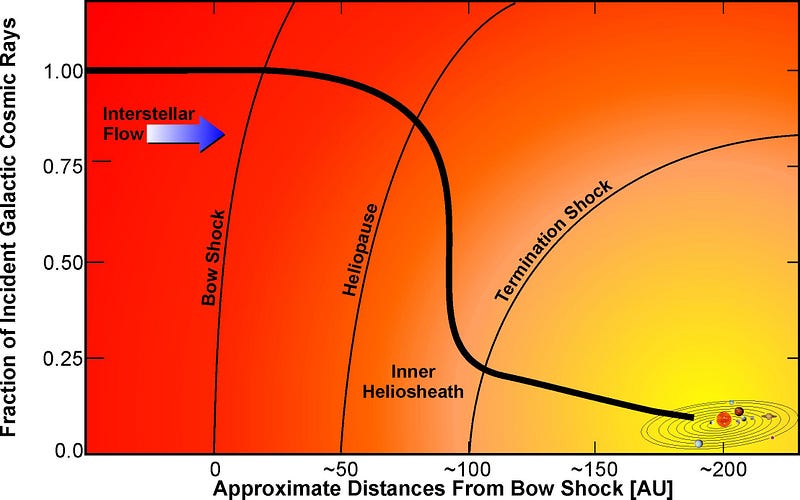
In theory, there are collision occurring everywhere in space between these cosmic rays, and so in a very real sense of the word, the Universe itself is our ultimate Large Hadron Collider: up to ten million times more energetic than what we can perform here on Earth.
And that’s the fantastic story of the highest energy particles in the Universe — from cosmic rays — and the cosmic energy limit!
Leave your comments at the Starts With A Bang forum on Scienceblogs!



